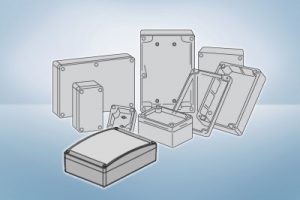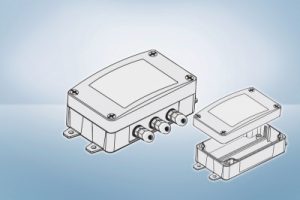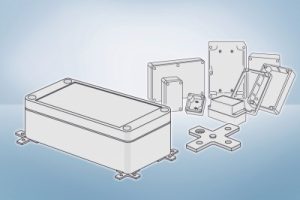Series 200
Series 200f
Series 1000
The Importance of Sealed Enclosures in Electronic Systems
These enclosures are designed to IP65 specifications and are ideal for use in electrical and electronic industries for use where modern design is important. The moulded enclosures are offered in two different designs and a variety of colours. Series 200/1000
In the realm of electronic engineering, the term sealed enclosures holds significant importance, acting as a protective shield for delicate components. These enclosures are designed to safeguard electronic devices from environmental factors such as dust, moisture, and other potentially damaging elements.
Understanding the Functionality
This device play a pivotal role in maintaining the integrity of electronic systems. Whether it’s a high-end audio speaker or a sensitive electronic control unit, the enclosure serves as the first line of defence against external threats. By preventing the ingress of moisture and dust, these enclosures contribute to the longevity and reliability of electronic devices.
The Design Dynamics
In the design phase, engineers meticulously plan the structure to ensure optimal protection. The materials used are chosen for their durability and resistance to environmental stressors. The seams and joints are expertly crafted to eliminate potential points of vulnerability.
Creating an effective device involves a delicate balance. On one hand, it needs to be robust enough to withstand external pressures, and on the other, it should allow for efficient heat dissipation to prevent internal overheating. Striking this balance ensures that the enclosed components operate within their specified temperature range, enhancing their performance and lifespan.
Applications
Sealed enclosures find applications across various industries. In automotive electronics, these enclosures protect sensitive control modules from the harsh conditions under the hood. In marine electronics, they shield navigation systems from the corrosive effects of saltwater. Moreover, in industrial settings, where dust and debris are prevalent, sealed enclosures ensure the seamless operation of electronic equipment.
Advantages of Utilizing Sealed Enclosures
- Enhanced Durability: The primary advantage of using this product is the enhanced durability they provide to electronic components. By creating a barrier against external elements, these enclosures prevent corrosion and damage, thereby prolonging the lifespan of the enclosed devices.
- Reliability in Challenging Environments: Electronic systems operating in challenging environments, such as outdoor installations or industrial settings, greatly benefit from the reliability offered by this device. These enclosures act as a shield, allowing electronic devices to function optimally regardless of external conditions.
- Reduced Maintenance Costs: The proactive protection offered by sealed enclosures translates to reduced maintenance costs. Devices housed within these enclosures are less prone to wear and tear, leading to fewer breakdowns and, consequently, lower maintenance expenses.
The Future of Sealed Enclosures
As technology advances, the demand for more robust and efficient sealed enclosures continues to grow. Engineers are exploring innovative materials and design techniques to further enhance the protective capabilities of these enclosures. From advancements in sealant technologies to the integration of smart sensors for real-time environmental monitoring, the future promises even more sophisticated sealed enclosures.
In conclusion, sealed enclosures stand as the unsung heroes of the electronic world. Their role in safeguarding delicate components from the rigors of the environment cannot be overstated. As technology evolves, so too will the design and capabilities of sealed enclosures, ensuring that electronic systems remain reliable and resilient in the face of diverse challenges.







